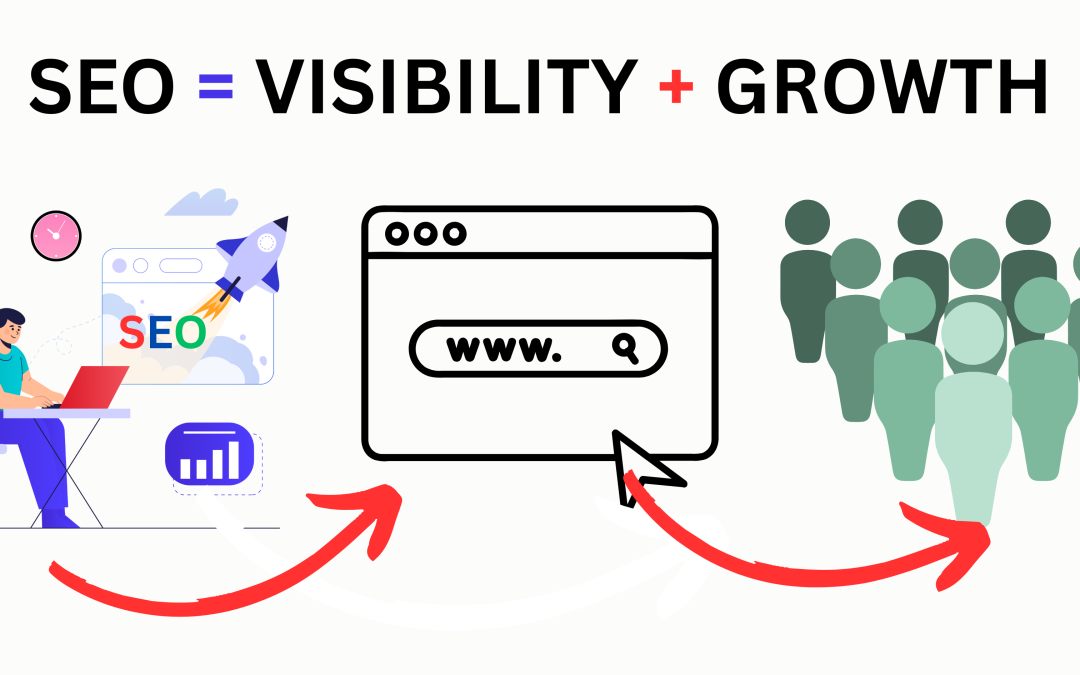What Is SEO? Discover how SEO helps websites rank on Google. Here are easy tips for beginners to understand and apply SEO fast! Start learning now!
What is SEO (Search Engine Optimization)?
Search Engine Optimization, or SEO, is a method of improving a website’s visibility in search engine results pages (SERPs). It involves techniques and creative strategies to improve rankings, attract organic traffic, and increase the quality and quantity of visitors.
In other words, SEO services is also about increasing the standard and total website traffic. As you improve your position in search engines, you’ll likely get more visitors who may be engaged in your website, its products, or its content.
For the best explanation, we can use a real example. For instance, if you search for the term ‘best AC service providers’ on Google, Google will show you the top-ranking website for your keyword. Google shows these results for free, and the number of visitors coming through this is called organic traffic.
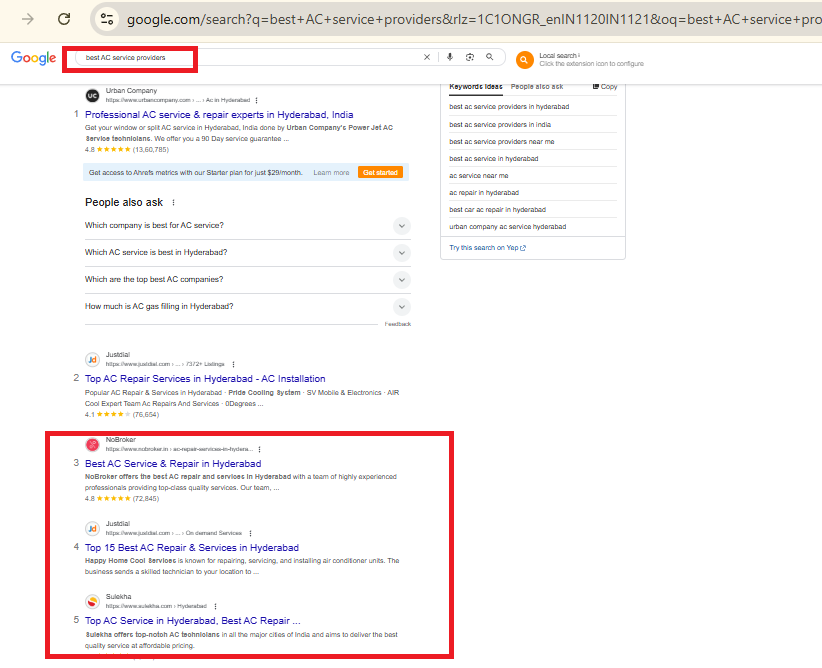
Why is SEO Important?
Catering to a Huge Audience
Most online approaches begin with a search engine. Ranking high means visibility in front of a wide, global audience actively searching for your products or services.
Low Cost of Implementation
Compared to paid advertising, SEO is cost-effective in the long run. You pay with time and effort upfront, but you can enjoy consistent traffic once you rank.
Staying Ahead of the Competition
Your competitors are investing in SEO. If you don’t, you’re handing them an advantage. SEO helps you stay relevant and ahead in a competitive online landscape.
Enhance User Experience
Good SEO practices improve user experience. You can please Google and your visitors by offering fast load speeds, mobile optimization, and easy navigation.
Builds Trust and Credibility
Sites that rank well are considered more trustworthy by users. Authority backlinks, quality content, and user-friendly design contribute to your reputation.
Data and Analysis
SEO provides valuable insight into user behaviour through tools like Google Analytics, Search Console, and Heatmaps.
How Does a Search Engine Work?
Search engine tools like Ecosia, Bing, StartPage, Google and DuckDuckGo are important systems that help users find accurate information quickly with accuracy. They follow a multi-step process that includes crawling, indexing, and ranking. Let’s break it down:
Crawling
Crawling is the first step in the process. Search engines send out automated bots known as crawlers or spiders to discover content across the web. These bots move from one page to another via links, collecting information such as:
- Page titles
- Meta tags
- Image alt texts
- Content structure
- Internal and external links
Search engines start with a known list of URLs (called a seed list) and, crawl those pages, then follow hyperlinks on those pages to discover new content. Crawling helps search engines discover which websites exist and what they contain.
✅ Example: Googlebot is Google’s main crawler. It continuously explores the internet, discovering new content and re-crawling updated pages. In the below as you can see, google has crawled and index your post.
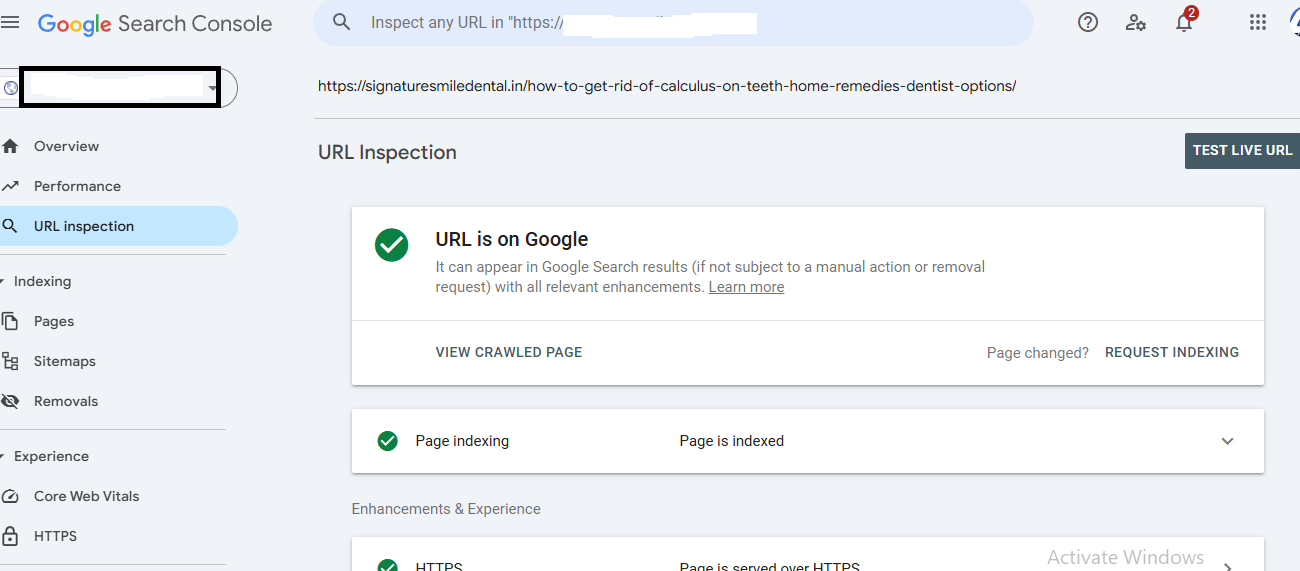
Indexing
Once the content is crawled, it needs to be understood and stored. This process is called indexing. The data collected by crawlers is organized and added to the search engine’s massive index — essentially a digital library of all known web pages.
During indexing, search engines analyze:
- Page content and topic
- Keywords and keyword context
- The freshness of the content
- Multimedia content like images or videos
- Page structure (HTML, headings, schema, etc.)
Search engines also use semantic indexing, which helps them understand the exact keyword and its context and intent.
⚠️ Note: If your page is not indexed, it won’t appear in search results — even if it’s well-designed or keyword-optimized. In the below image page is not index.
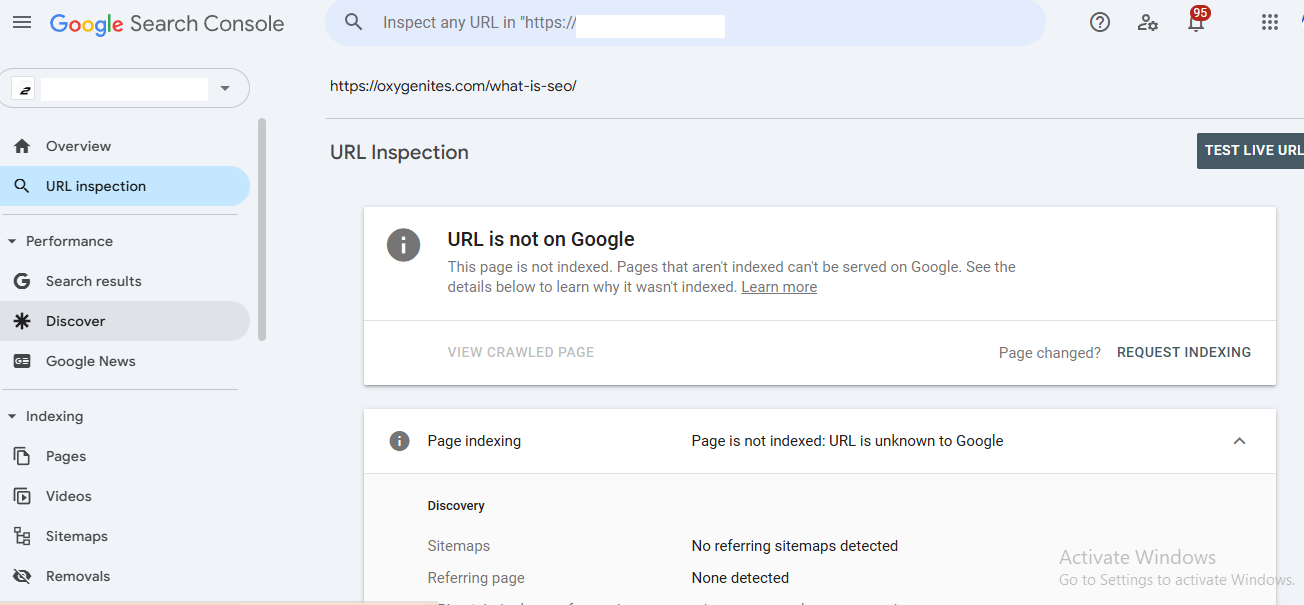
Ranking
When a user search a query into a search engine, it searches its index to find the most relevant pages. This is where the ranking algorithm comes into play.
The algorithm uses hundreds of ranking signals (Google has over 200) to evaluate and sort results. Tops of the most important ranking factors include:
- Keyword relevance
- Page authority (backlinks)
- Mobile-friendliness
- Page load speed
- Secure connection (HTTPS)
- User engagement signals (click-through rates, dwell time)
- Content quality and originality
Search engines try to match the user intent (informational, navigational, or transactional) with the most helpful and trustworthy pages. The goal is to show the best possible answer at the top of the search results.
How Do Search Engines Find Your Pages?
This tool helps you send a request to Google to crawl your website. You can also submit sitemaps for your site and monitor the number of submitted pages added to Google’s index and other details.
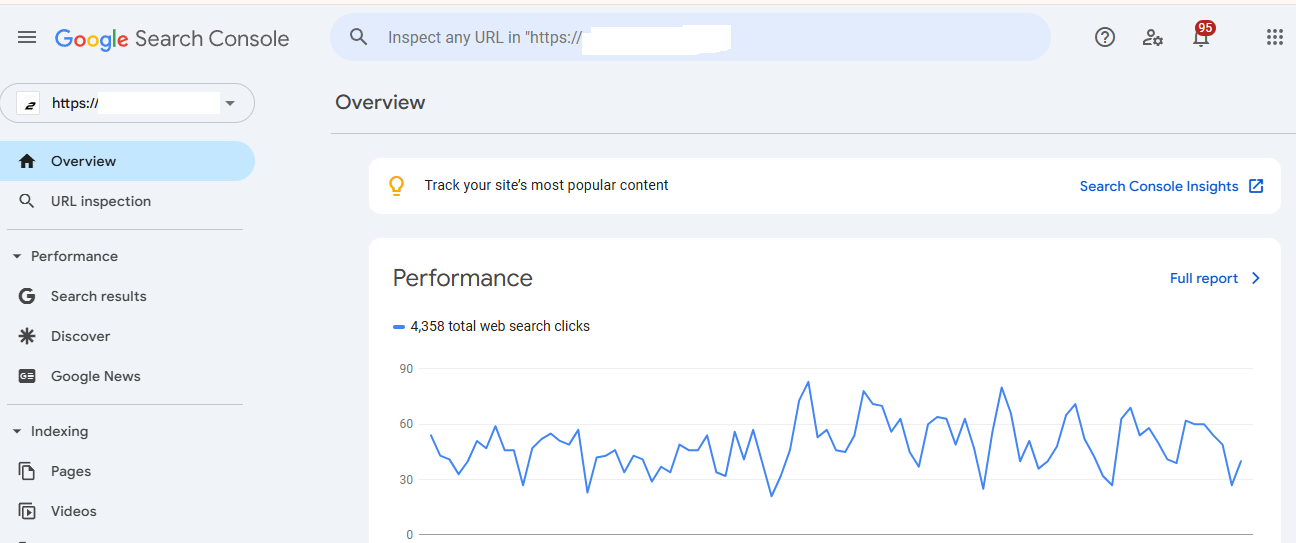
Why Sites Don’t Show Up in Search Results?
- Noindex tag present
- Poor content quality
- Blocked by robots.txt
- Lack of backlinks
- Penalty from algorithm updates
What is the Search Engine Algorithm?
Search engines use algorithms to decide the most relevant results for a query.
i. Analyze User Query
Search engines try to explain the intent behind a search query (informational, transactional, or navigational).
ii. Finding Matching Pages
The engine matches the query with indexed pages based on keywords, relevance, and authority.
Why Search Engines Sometimes Display Faulty/No Results?
This happens when the content doesn’t match user intent, is poorly optimized, or lacks authority.
How SEO Works?
SEO works by optimizing various website elements so search engines can explain their relevance and value to user queries. It starts with identifying what people are searching for—using keyword research—and then tailoring your website’s content, structure, and technical setup to target those search terms. By doing this, search engines are more likely to rank your pages higher, bringing in more organic traffic.
For example, run a bakery in Delhi and optimize your site with keywords like “best cakes in Delhi.“ Add quality content about your products, fast loading speed and mobile-friendliness. Google will find your site more valuable for people searching those terms. Over time, you may appear on the first page, attracting customers without paying for ads.
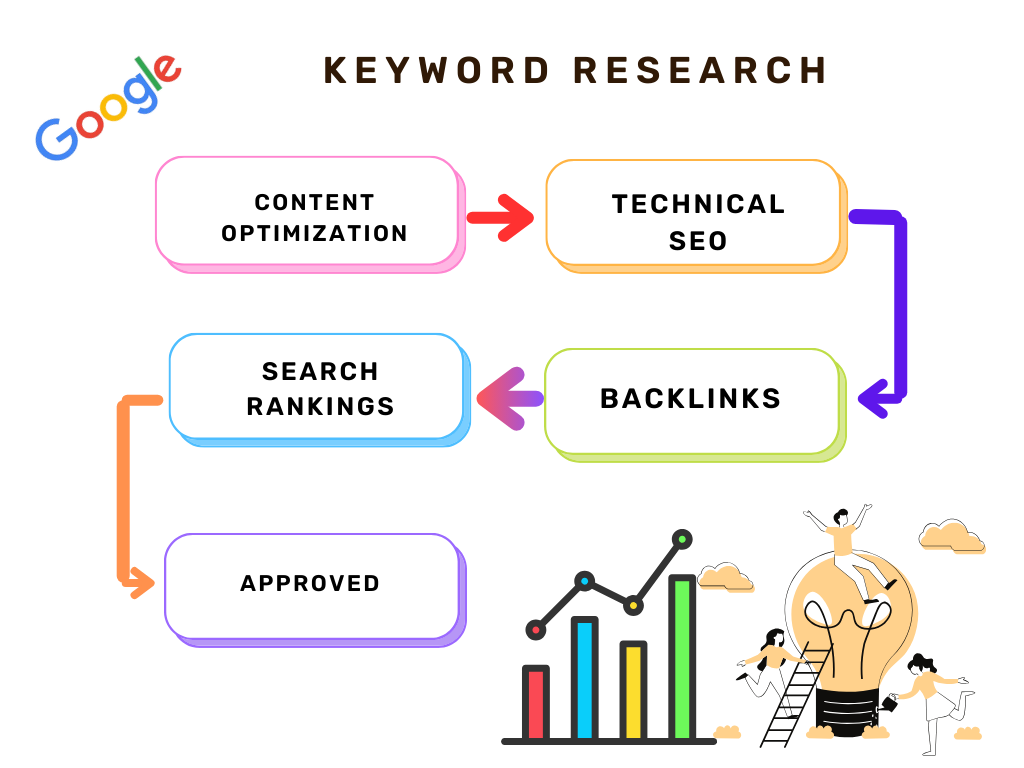
What are the Major Types of SEO?
On-Page SEO
Why is On-Page SEO Important?
It verifies that search engines recognize the content of your pages and rank them appropriately.
What are the Most Important On-Page Ranking Factors?
i) Title Tag Optimization
Use clear, concise titles with the primary keyword near the beginning.
ii) Meta Keywords and Meta Descriptions
Though meta keywords are outdated, a well-written meta description can increase CTR.
iii) Heading Tags
Organize content using H1, H2, H3 and H4 tags appropriately.
iv) Image Optimization and Interactive Media
Use alt text and descriptive file names, and reduce image size.
v) Engaging Content
Content should be unique, relevant, and answer the searcher’s query.
vi) Internal & External Links
Use links to guide users and spread link equity.
vii) Handle Duplicate Content
Use canonical tags and avoid duplicate pages to ensure search engines rank the correct version.
2. Technical SEO
Why is Technical SEO Important?
It provides that search engines can crawl, index, and rank your site effectively.
Technical SEO Best Practices
i) Website Speed
Improve loading times using caching, compression, and fast servers.
ii) Mobile-Friendliness
Responsive design is now a ranking factor. Use Google’s Mobile-Friendly Test.
iii) Site Architecture
Structure your site with a clear hierarchy and use breadcrumb navigation.
iv) Security
Use HTTPS to encrypt data and increase trust.
v) Structured Data Markup
Use schema to enhance search appearance with rich snippets.
vi) Create an XML Sitemap
The below given is an example of XML Site map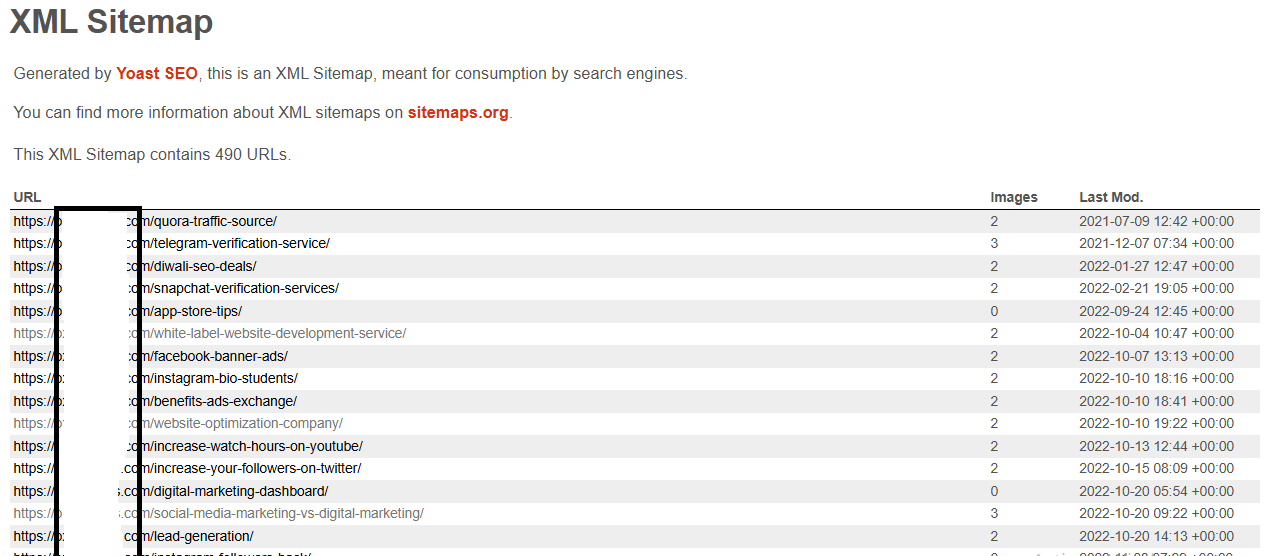 3. Off-Page SEO
3. Off-Page SEO
Why is Off-Page SEO Important?
It builds your site’s authority and trustworthiness.
Off-page Optimization Techniques
i) Quality Inbound Links
Get backlinks from sites with high domain authority(DA).
ii) Social Media Marketing
Share your content or blogs on social media platforms to increase visibility and backlinks.
iii) Content Marketing
Produce high-value blog posts, infographics, and videos.
iv) Localization and Citations
Ensure consistent business information across directories.
v) Email Marketing
Engage audiences and drive traffic to your optimized content.
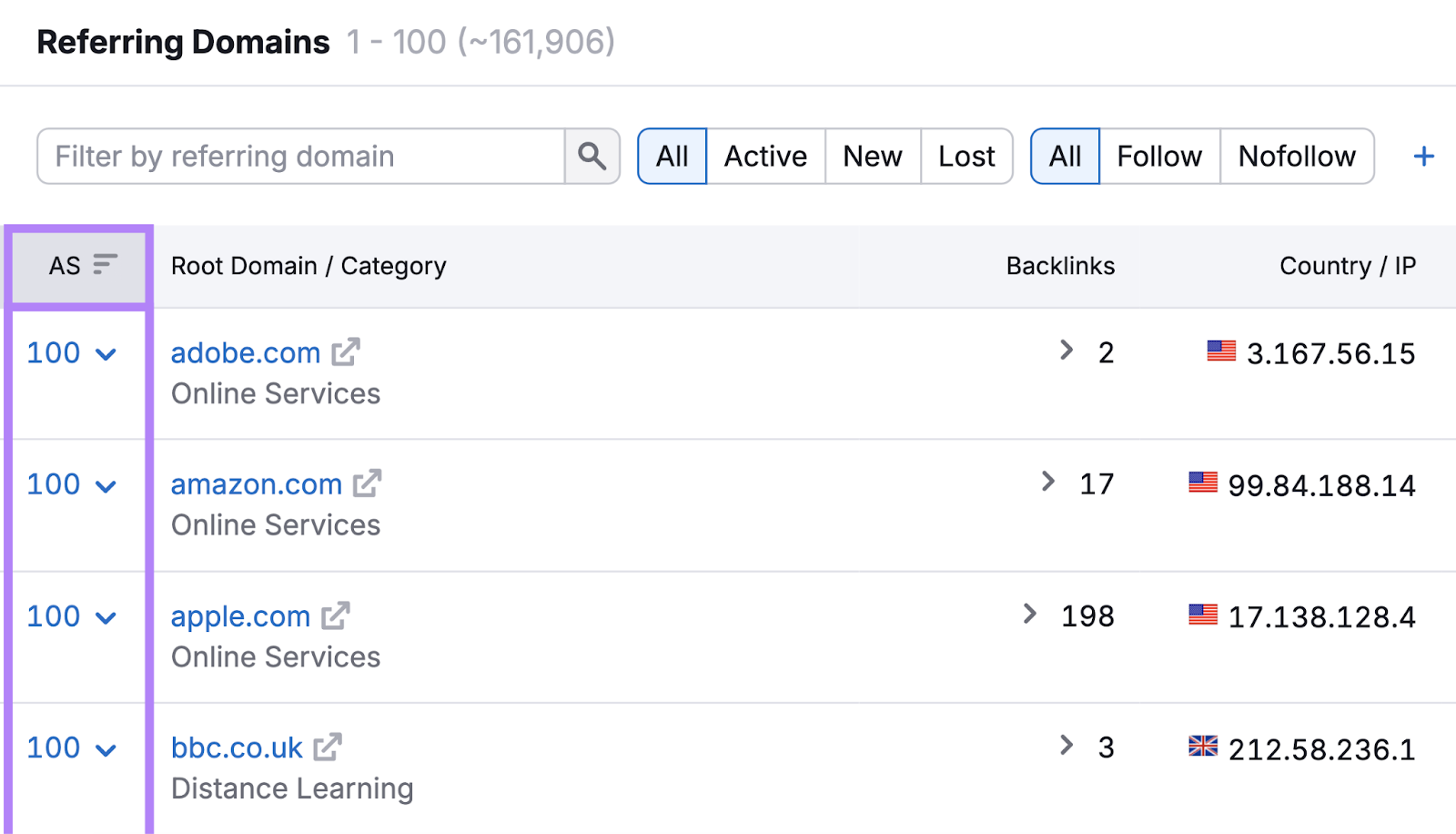
How do you do keyword research for SEO?
1. What is the role of Keyword research in SEO, and why does it play an important role?
Keyword research is one of the most important aspects of SEO because it directly impacts how well your content ranks on search engines. Acknowledging what your audience is searching for helps you create relevant and optimized content for those specific queries. By knowing the search intent that regular visitors are looking for, you can tailor your website’stciles, blogposts, and services pages to target those particular keywords.
It increases your organic traffic and ensures that the content you produce meets the needs and interests of your audience. For instance, if you’re running an online store that sells sneakers, performing keyword research can reveal terms like “best running shoes for flat feet“ or “affordable sneakers for men,“ which you can target in your content to increase visibility in search results and attract more customers.
The below is the example for top searches.
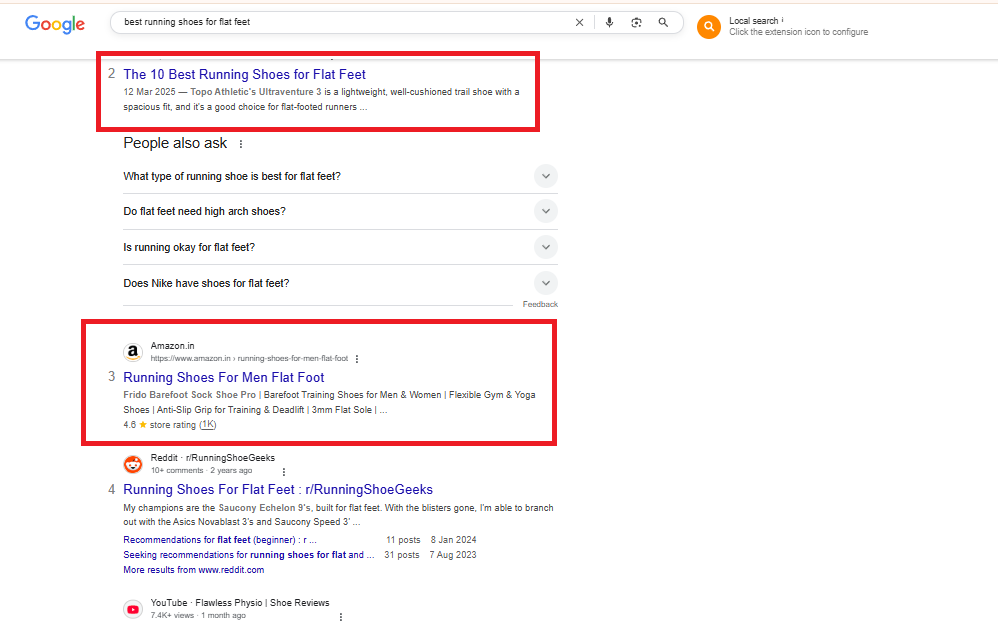
2. Brainstorming for Keywords
Brainstorming for keywords is the initial step in the keyword research process, and it involves thinking about your business, niche, and the potential questions your audience might have. Start by creating a list of broad topics related to your industry, products, or services. These could be things like “digital marketing,” “healthy eating,“ or “home improvement tips.“ Once you have a list of broad topics, you can break them down into more specific subtopics or long-tail keywords.
For example, from “digital marketing,“ you could narrow down to “SEO services,” “email marketing tips,“ or “social media strategies.“ This helps identify general and specific search intents that people might use when looking for solutions in your area of expertise.
3. What are some things to know before finding a suitable keyword? (Competitor’s Keywords Analysis)
It is important to find the most suitable keyword. It involves not only brainstorming but also analyzing your competition. By gathering your competitors’ keywords for which they are ranking, you can gain valuable insights into what works and which topics have significant search volume. Tools like Ahrefs, Semrush, and Moz allow you to analyze your competitors’ keyword strategies. You can enter their websites using these tools to see which keywords they rank for, how much traffic they’re receiving, and the difficulty level of ranking for these terms.
For example, if you find that your competitor’s blog is ranking for the keyword “best-running shoes for long-distance runners,” this could indicate high interest in this topic. You can use this information to target the same or similar keywords in your content, adjusting your approach to make it more compelling or detailed to improve your chances of outranking them.
Competitor analysis gives you a competitive edge and can highlight keyword opportunities that you might not have considered otherwise.
The below image shows you the competitor’s keywords which we can include in your article.

4. How to Choose the Best Keyword?
i) Long-tail Keywords:
Less competition and more targeted traffic.
ii) Latent-Semantic Indexing (LSI) Keywords:
Related terms that support the main keyword.
iii) Follow Recent Trends:
Stay updated using Google Trends.
iv) Location-Based Keywords:
Useful for local SEO (e.g., “plumber in Miami”).
5. Keyword Research Tools
i) Google Trends
ii) Google Keyword Planner
iii) Semrush
iv) Soovle
v) Ubersuggest
Emerging Trends in SEO in 2025
1. Artificial Intelligence in SEO
AI is transforming keyword research, content creation, and competitor analysis.
2. Google’s EEAT Factors
Experience, Expertise, Authoritativeness, and Trustworthiness matter more than ever.
3. Core Web Vitals for Enhanced Ranking
Focus on LCP, FID, and CLS for performance.
Quick Tips to Improve Core Web Vitals
- Use fast hosting
- Compress media
- Defer JavaScript
Practical Guide to Improving Your Website’s SEO in 2025
1. Using AI for SEO
i) AI-Powered Keyword Research
Use AI tools to uncover opportunities faster.
ii) Understanding Search Intent with AI
Analyze what users want to see.
iii) On-page Optimization with AI
Optimize content layout and structure using smart suggestions.
iv) Competitive Analysis
Track competitors’ moves in real-time.
v) Facilitating Content Creation
Generate outlines and FAQs and draft content using AI.
2. Doing SEO Yourself
- Use Google Search Console
- Follow on-page and technical SEO best result
- Build relationships for backlinks
Conclusion
SEO in 2025 requires a mixture of solid fundamentals, awareness of emerging trends, and smart implementation. You can secure your place in Google’s top ranking by aiming at valuable content, user experience, and your site’s technical health.
FAQs
Q1: How long does SEO take to show results?
A: Typically, it is 3–6 months, depending on competition and effort.
Q2: Is SEO better than PPC?
A: SEO brings long-term results, while PPC is immediate. Both have their place.
Q3: Can I do SEO without coding?
A: Yes, many SEO tasks can be completed without coding skills.
Q4: How often should I update SEO content?
A: Update every 3–6 months or when major algorithm updates occur.
Q5: What’s the best free SEO tool?
A: Google Search Console and Google Keyword Planner are excellent free tools.
Q6: What are the latest Google SEO trends in 2025?
A: In 2025, Google emphasizes EEAT (Experience, Expertise, Authoritativeness, Trustworthiness), Core Web Vitals, mobile optimization, and AI-generated helpful content. Following ethical white hat practices and optimizing user experience is crucial to maintaining or improving rankings in search results.
